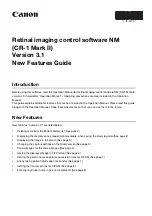
Replication and Binary Logging Options and Variables
1462
Type
boolean
Default
FALSE
Display slave user names and passwords in the output of
SHOW SLAVE HOSTS
on the master server
for slaves started with the
--report-user
[1461]
and
--report-password
[1460]
options.
•
--skip-slave-start
[1462]
Command-Line Format
--skip-slave-start
Option-File Format
skip-slave-start
Permitted Values
Type
boolean
Default
FALSE
Tells the slave server not to start the slave threads when the server starts. To start the threads later,
use a
START SLAVE
statement.
•
--slave_compressed_protocol={0|1}
[1465]
Command-Line Format
--slave_compressed_protocol
Option-File Format
slave_compressed_protocol
Option Sets Variable
Yes,
slave_compressed_protocol
[1465]
Variable Name
slave_compressed_protocol
Variable Scope
Global
Dynamic Variable
Yes
Permitted Values
Type
boolean
Default
OFF
If this option is set to 1, use compression for the slave/master protocol if both the slave and the
master support it. The default is 0 (no compression).
•
--slave-load-tmpdir=file_name
[1462]
The name of the directory where the slave creates temporary files. This option is by default equal to
the value of the
tmpdir
[502]
system variable. When the slave SQL thread replicates a
LOAD DATA
INFILE
statement, it extracts the file to be loaded from the relay log into temporary files, and then
loads these into the table. If the file loaded on the master is huge, the temporary files on the slave
are huge, too. Therefore, it might be advisable to use this option to tell the slave to put temporary
files in a directory located in some file system that has a lot of available space. In that case, the relay
logs are huge as well, so you might also want to use the
--relay-log
[1455]
option to place the
relay logs in that file system.
The directory specified by this option should be located in a disk-based file system (not a memory-
based file system) because the temporary files used to replicate
LOAD DATA INFILE
must survive
machine restarts. The directory also should not be one that is cleared by the operating system during
the system startup process.
•
--slave-net-timeout=seconds
[1462]
Command-Line Format
--slave-net-timeout=#
Option-File Format
slave-net-timeout
Option Sets Variable
Yes,
slave_net_timeout
[1466]
Summary of Contents for 5.0
Page 1: ...MySQL 5 0 Reference Manual ...
Page 18: ...xviii ...
Page 60: ...40 ...
Page 396: ...376 ...
Page 578: ...558 ...
Page 636: ...616 ...
Page 844: ...824 ...
Page 1234: ...1214 ...
Page 1427: ...MySQL Proxy Scripting 1407 ...
Page 1734: ...1714 ...
Page 1752: ...1732 ...
Page 1783: ...Configuring Connector ODBC 1763 ...
Page 1793: ...Connector ODBC Examples 1773 ...
Page 1839: ...Connector Net Installation 1819 2 You must choose the type of installation to perform ...
Page 2850: ...2830 ...
Page 2854: ...2834 ...
Page 2928: ...2908 ...
Page 3000: ...2980 ...
Page 3122: ...3102 ...
Page 3126: ...3106 ...
Page 3174: ...3154 ...
Page 3232: ...3212 ...
















































